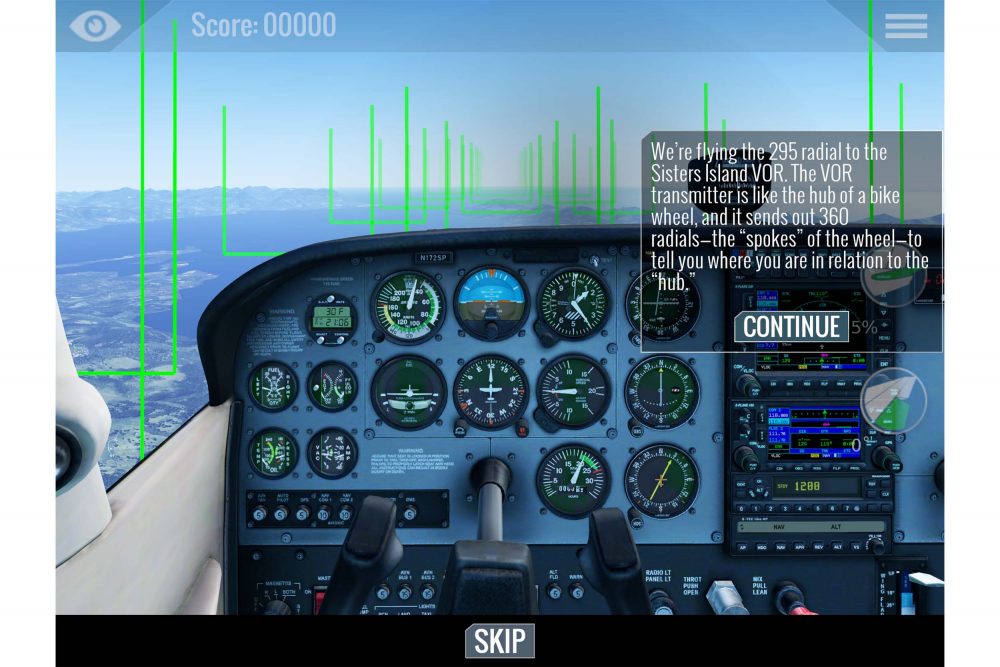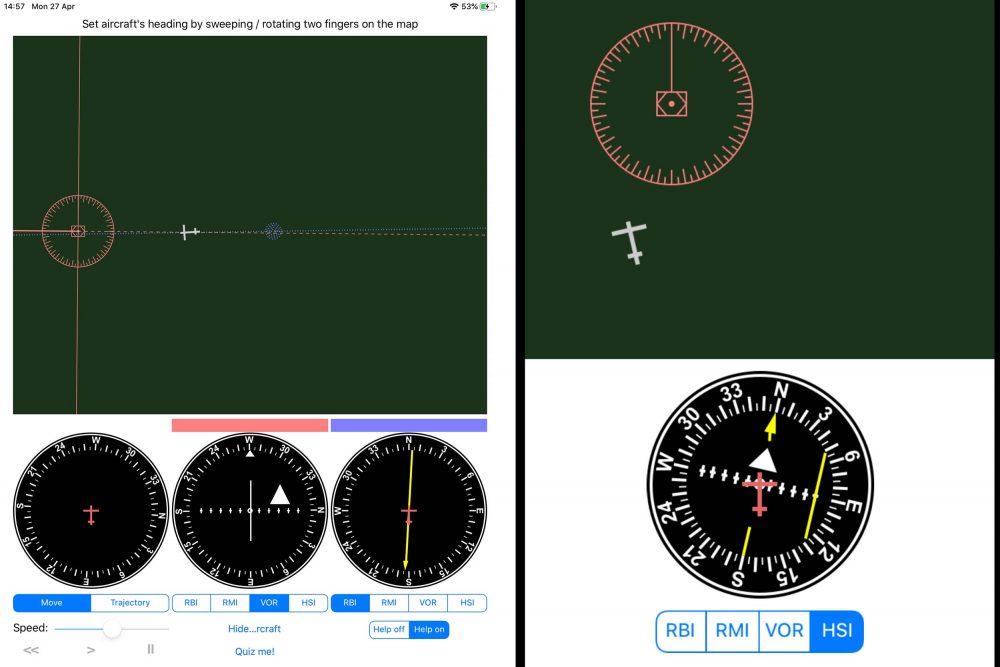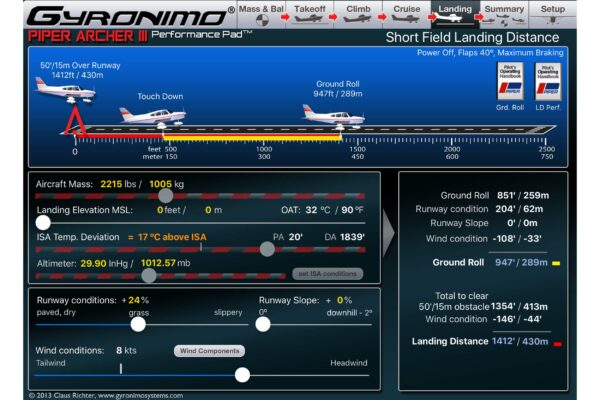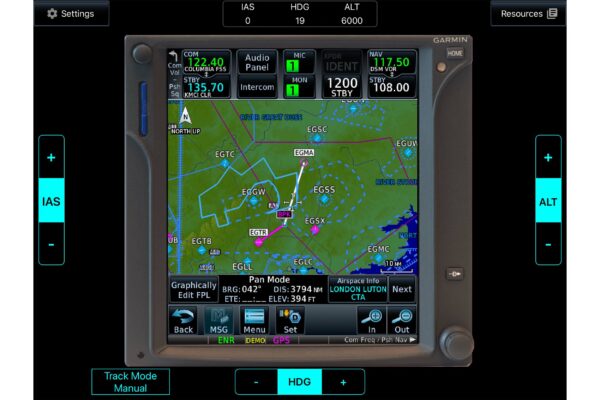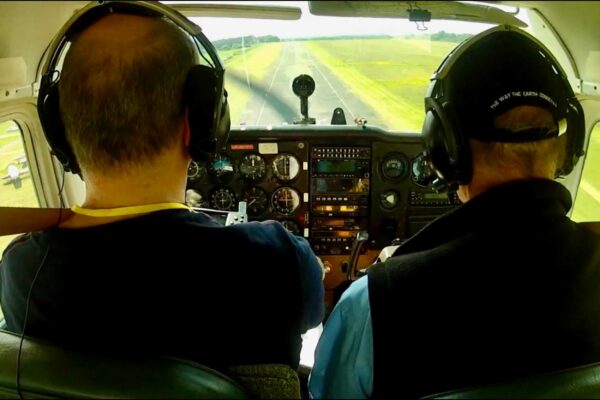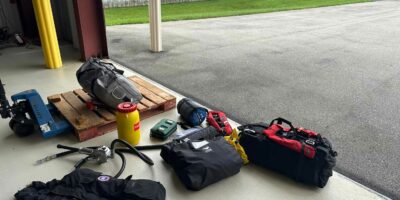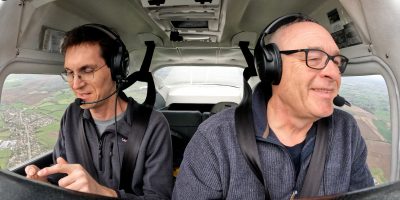I’d spent the last year mostly flying with Modernair at Fowlmere and hadn’t flown much recently at Elstree, so practising Standard Overhead Joins, while avoiding the many noise sensitive areas around Elstree, was my next challenge. Once airborne, SkyDemon’s display switched to a Pooleys plate, with the noise abatement areas and departure routes highlighted, a great feature. Adding to the challenge I then lowered the cloudbase and visibility and practised bad weather circuits.
One unexpected bonus of flying X-Plane was how much it taught me about using SkyDemon. I’d mostly used it as a planning tool, but now was able to hit that pause button and experiment. Tapping the top left SkyDemon logo gave me a list of nearest airfields. Choosing one changed the display to a ‘direct to’ route. Pressing the diversion airfield itself called up more information, distance, ETA and direction, frequency and field elevation. The information section gave approach info and access to Pooleys or AFE plates (with a subscription).
This led me to spend an afternoon on YouTube, searching ‘SkyDemon tutorials’ and practising my learnings on X-Plane. Just like real-world flying, SkyDemon produced a log of my sim flights, which I could analyse later in SkyDemon or Google Earth.
I also tried X-Plane Mobile on my iPad. The free version has three free aircraft and limited flying areas. I used the C172SP to practise the lessons in the ‘Flight School’ section. Any PPL students who are lesson-starved can learn VOR navigation and ILS approaches. It really does work very well, using the mobile device’s built-in motion detectors.
Challenges
One feature I enjoyed very much was the ‘General Aviation Challenges’, which is within the ‘Challenges’ section. These included landings on a mountain top in a Piper Cub, short-field landings in Alaska, engine failures, engine fires, bad weather landings and even dealing with a bird strike! If you want to explore further afield beyond the ‘free’ areas, you can subscribe to whole-world scenery, airports and aircraft for £5.49 a month. I think we’re going to need a bigger iPad!
Much as I enjoyed X-Plane mobile, I really wouldn’t want to try this on anything smaller than an iPad Air. Changing frequencies, switches and flying a single engine prop aircraft was difficult. The rudder control is a thumb-activated circle on the right of the screen, along with similar trim and flap control areas, but the overall experience was surprisingly positive. Plus, it’s free!
Having had enough of simulators, I took a look at some of my IMC apps on the iPad. A free radio navigation app, Radionav Sim, has always struck me as a beautifully simple way for students to visualise how RBI/RMI/VOR/HSI instruments work. I wish it had been available 14 years ago when I was studying for my PPL. The full version is available for £1.99, which adds far more options, including the ability to draw a
course on the screen and have the aircraft follow it while tracking two VORs, plus a ‘where am I?’ quiz.


